Deem Symposium 2023: Bridging design, art, and community to ignite lasting social change
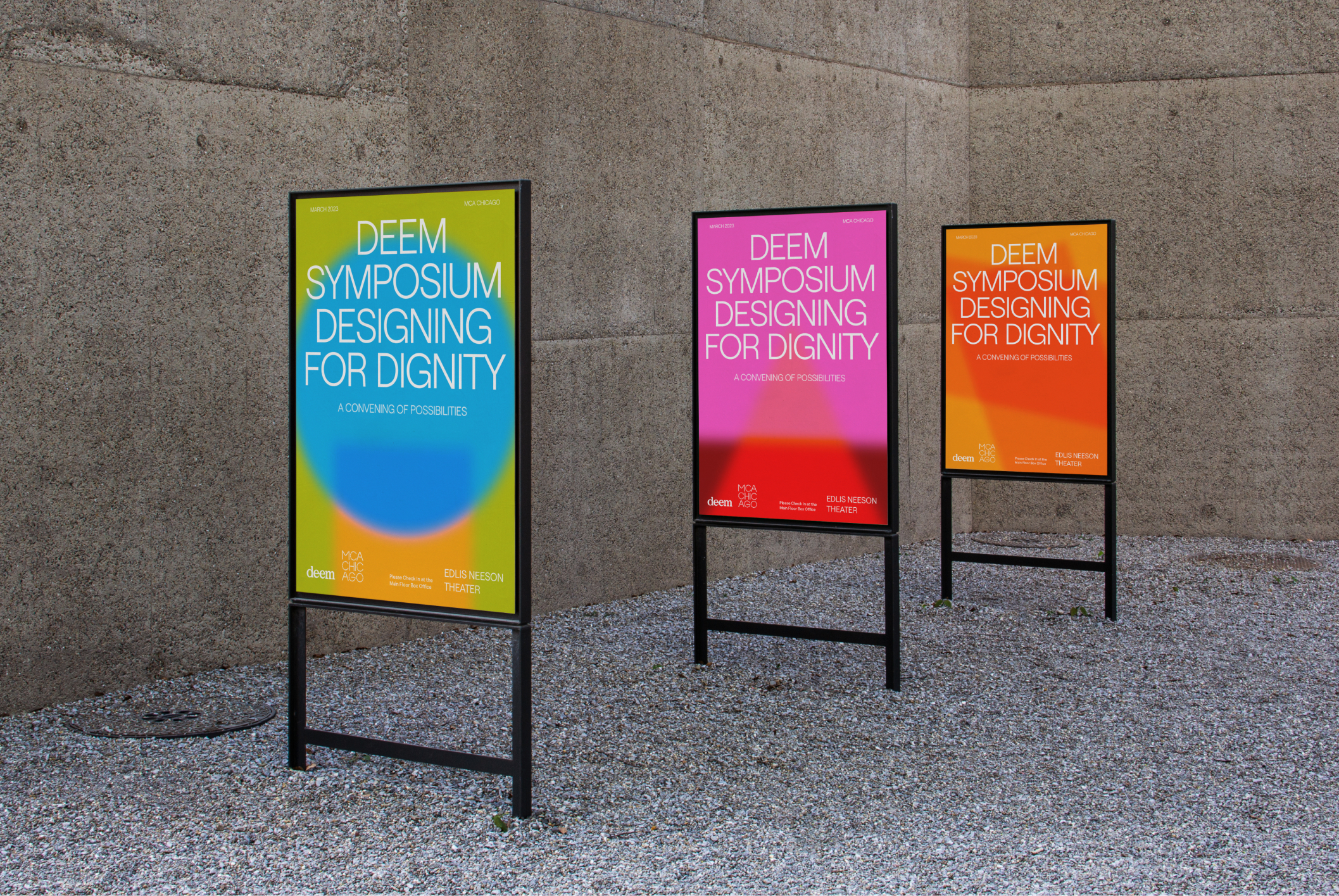
The Deem Symposium, Designing for Dignity: A Convening of Possibilities, was an annual gathering presented in partnership with the MCA Chicago. Designed as a hybrid in-person and virtual experience, the symposium brought together designers, cultural practitioners, and community members to expand on the themes explored across Deem Journal: Dignity, Pedagogy, Equity, and Place. Framed around the belief that design can serve as a catalyst for systemic change, the event featured conversations and presentations from leaders working at the intersections of design thinking, urban planning, education, art, and culture.
Programming
The symposium experience unfolded through a constellation of formats—interactive installations, community workshops, and panel discussions that convened voices across identity, discipline, geography, and generation. Highlights included an Amanda Williams keynote, reflecting on social practice; a dialogue on equitable community design in Chicago featuring Paola Aguirre Serrano, Maya Bird-Murphy, and Tonika Lewis Johnson, moderated by Otez Gary; and an endnote conversation on place with Toni L. Griffin and Germane Barnes. Both in-person and virtual audiences were invited not only to listen, but to participate, reflect, and connect.

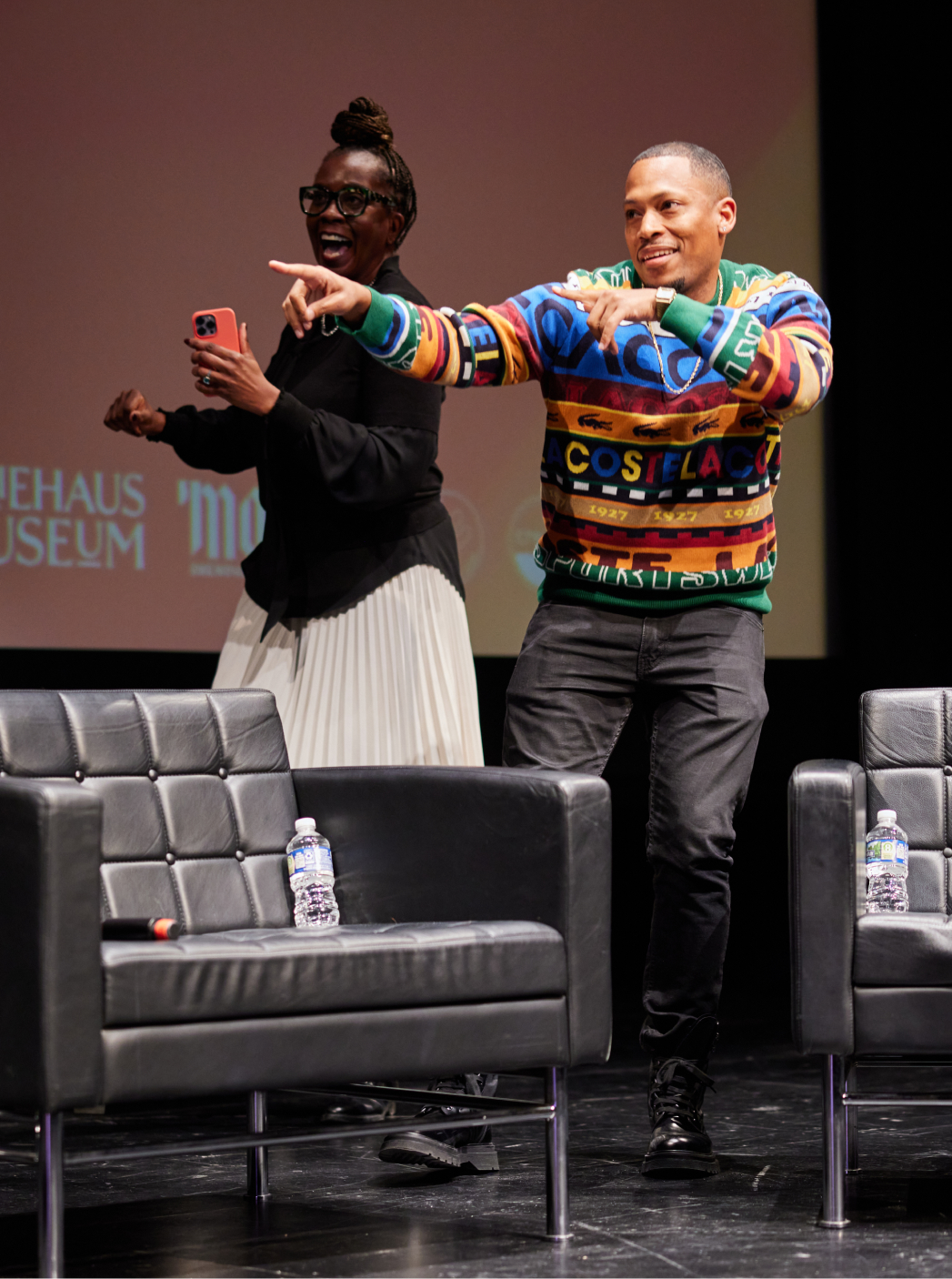
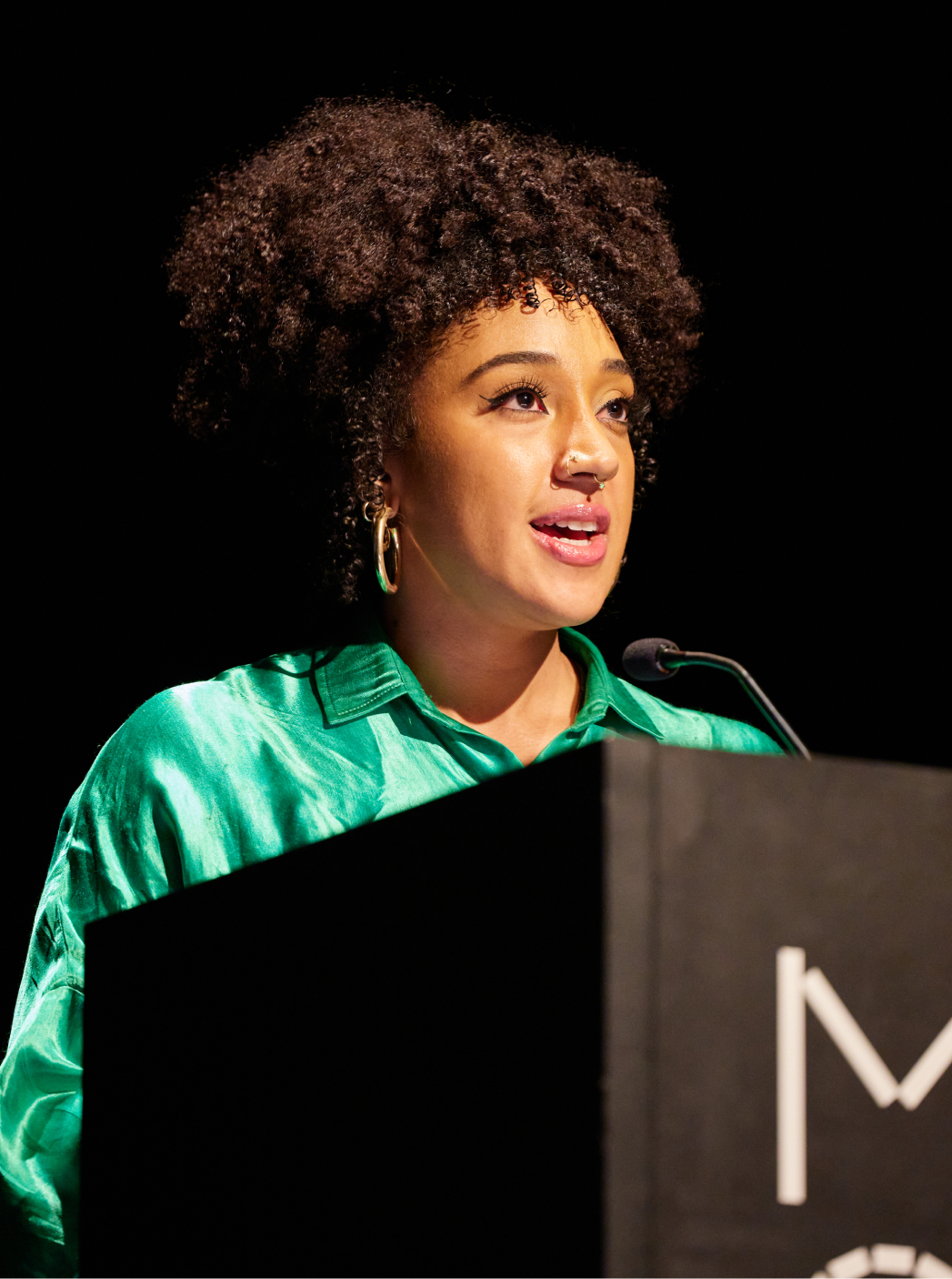
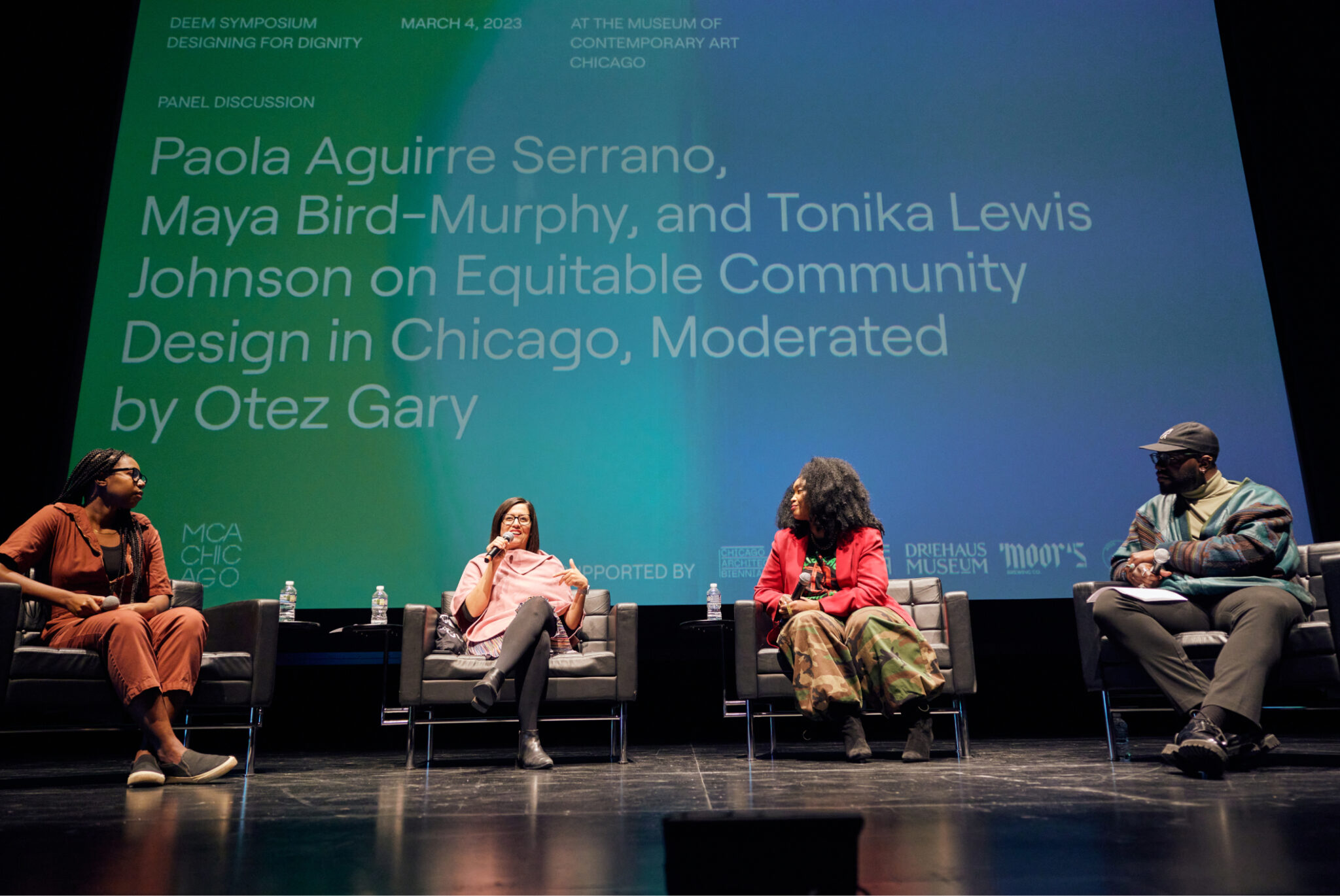
Design Language
The visual identity for the symposium was grounded in the idea of possibility, expressed through a system of overlapping shapes and intersecting forms. These collisions of color and geometry became metaphors for spontaneous exchange and co-creation. The system was applied across marketing materials, digital assets, and a printed broadsheet distributed at the event—each element supporting the rhythm and energy of the convening without overshadowing its content.


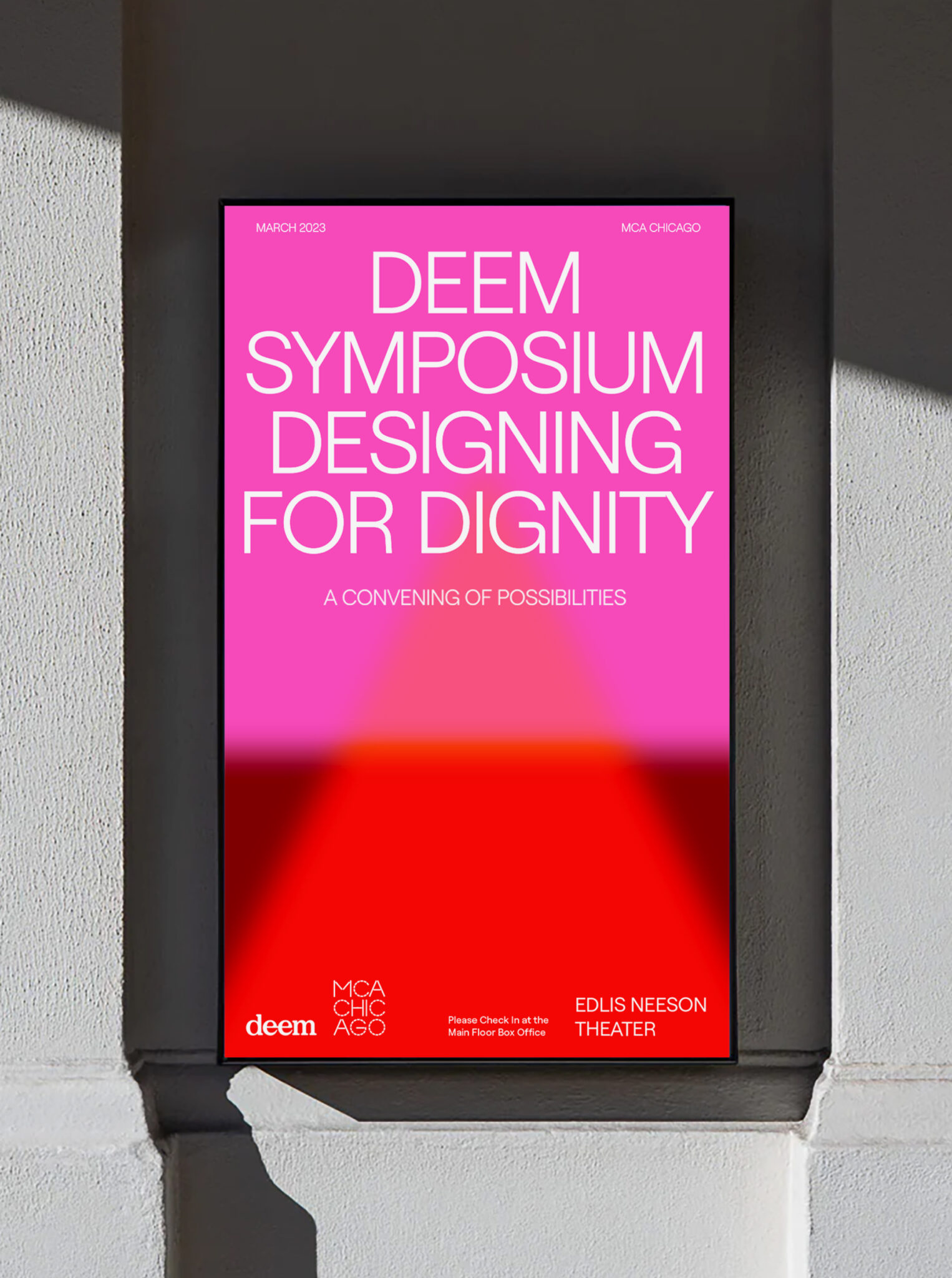
A Tote Worth a 1,000 Words
As a parting gesture, attendees received a tote bag bearing the symposium’s guiding question: What does it mean to design for dignity? A deceptively simple prompt, it inspired continued reflection beyond the event—sparking conversations, social media posts, and personal contemplation. While its function was modest, the tote became a lasting vessel for ideas.
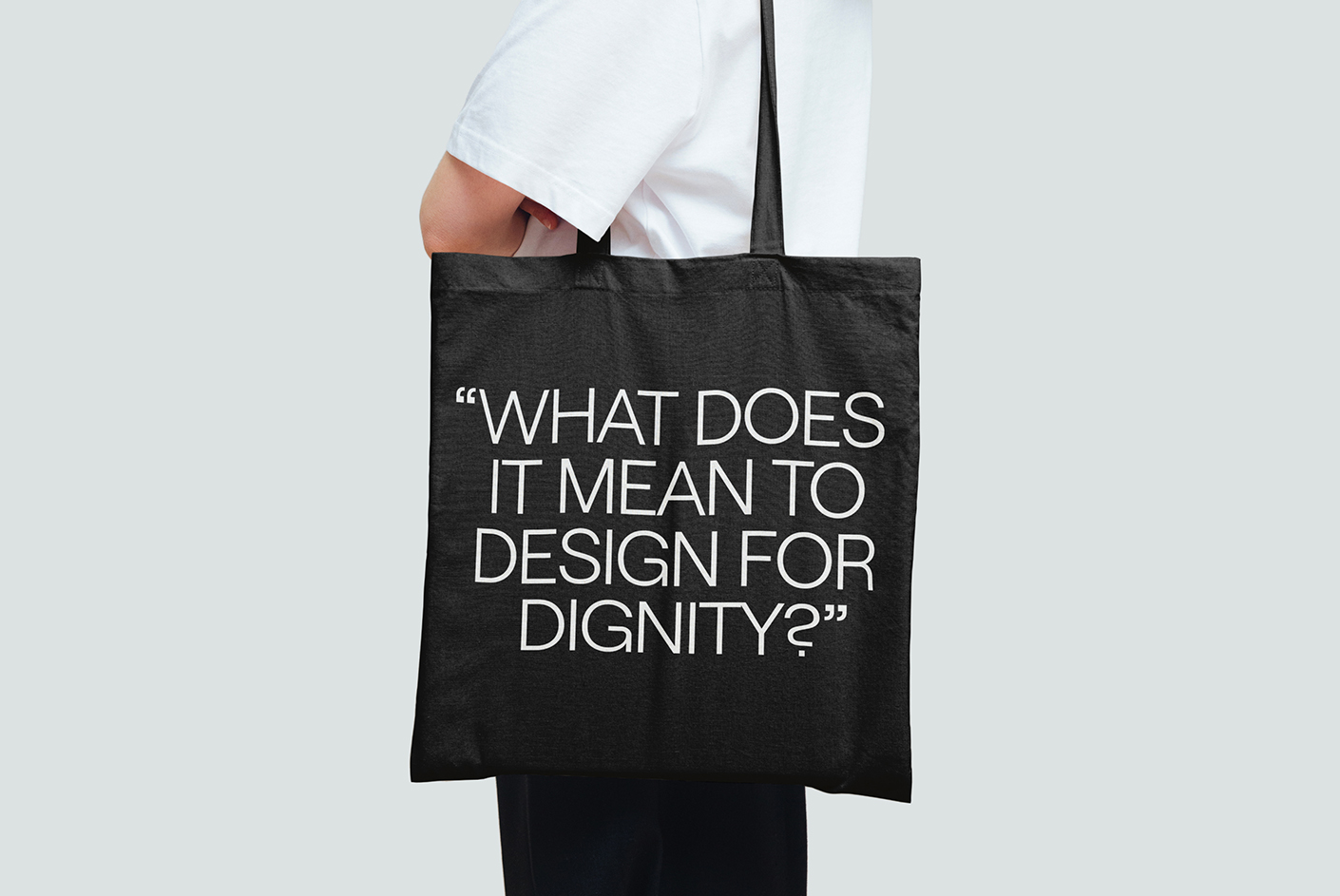
Reference Room (Pop-up)
To deepen engagement, the Reference Room served as a curated, public installation designed to situate the symposium in broader context. Through a custom display of texts, visuals, and media, the space invited attendees to explore the ideas, processes, and contributors behind the programming. Open to museum visitors and symposium guests throughout the weekend, it bridged the event with the everyday flow of the MCA.

The Impact
The symposium welcomed over 300 attendees to the MCA Chicago, selling out the auditorium while maintaining a sense of intimacy at scale. An additional 300+ participants joined virtually from across the globe. More than just numbers, the true impact lay in the atmosphere of collective inquiry it fostered—a space where design was not seen as product, but as practice. A shared cause brought people together: to imagine, build, and design toward a more dignified and interconnected future.

